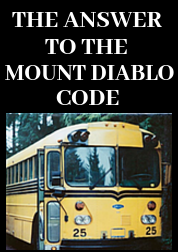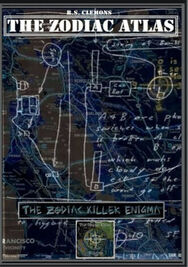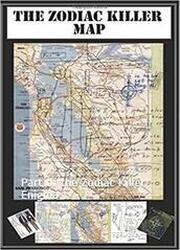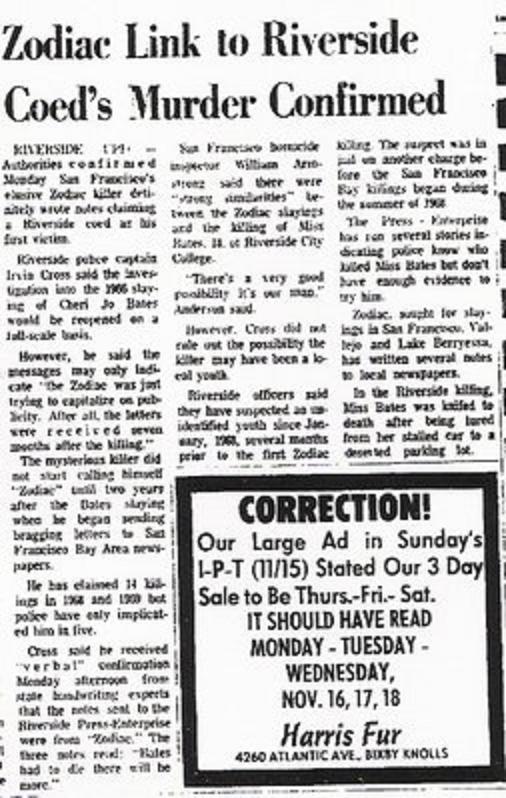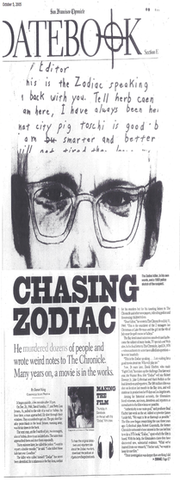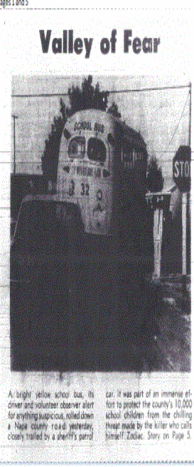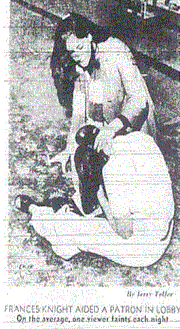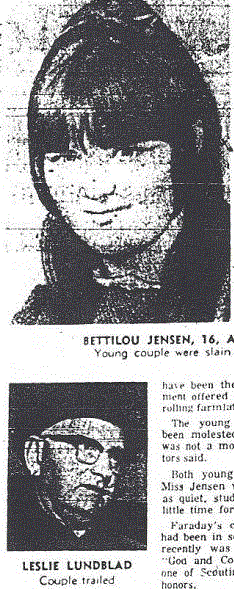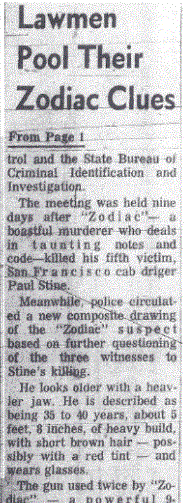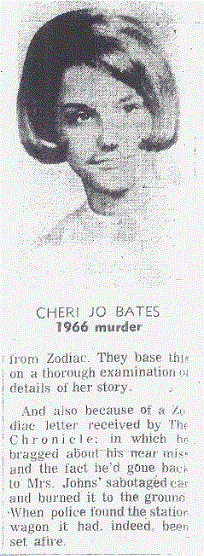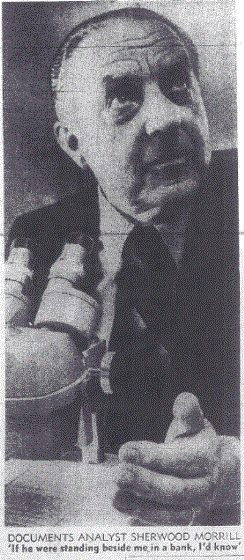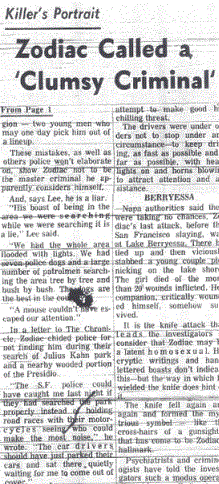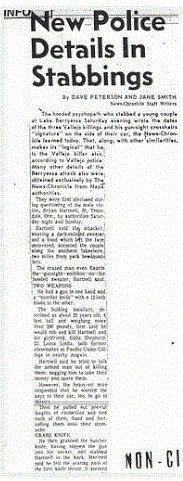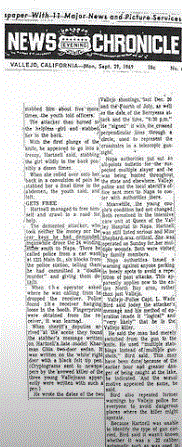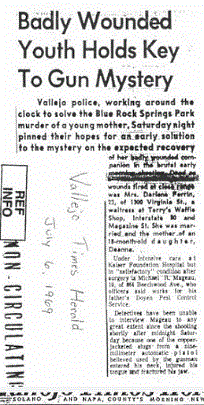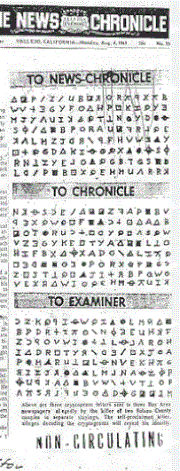
The Skytale Cipher technique involves rolling a band around a rod, to which a message is applied. When the band is unrolled the message is scrambled in ciphertext form. Only by re-wrapping the band around a same sized rod will the message reappear. I have followed the thread and the technique appears to work on the text of the 340 cipher as shown here. The thread ponders the question of where did the Zodiac Killer get his inspiration for the design of the 340 cipher, that baffled investigators for fifty-one years until Dave Oranchak, Sam Blake and Jarl Van Eycke cracked the cipher on December 3rd 2020.
There is a strong possibility the answer lies in the October 22nd 1969 San Francisco Examiner newspaper article by Will Stevens, entitled Cipher Expert Dares Zodiac to Tell Name, in which Dr. D.C.B Marsh laid down a challenge to the Zodiac Killer. The newspaper stated Dr Marsh told the Examiner today: "The killer wouldn't dare, as he claimed in letters to the newspapers, to reveal his name in the cipher to established cryptogram experts. He knows, to quote Edgar Allan Poe, that any cipher created by man can be solved by man. Zodiac has not told the truth in his cipher messages to the Examiner, the Chronicle and the Vallejo Times-Herald. Zodiac has not done this, because to tell the complete truth in relation to his name - in cipher code - would lead to his capture. I invite Zodiac to send The American Cryptogram Association a cipher code - however complicated - which will truly and honestly include his name".
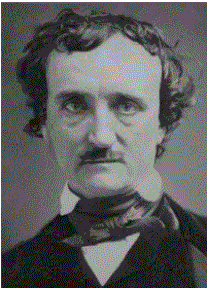 Edgar Allan Poe
Edgar Allan Poe As we can scarcely imagine a time when there did not exist a necessity, or at least a desire, of transmitting information from one individual to another, in such manner as to elude general comprehension; so we may well suppose the practice of writing in cipher to be of great antiquity. De La Guilletiere, therefore, who, in his “Lacedaemon Ancient and Modern,” maintains that the Spartans were the inventors of Cryptography, is obviously in error. He speaks of the scytala as being the origin of the art; but he should only have cited it as one of its earliest instances, so far as our records extend. The scytalae were two wooden Cylinders, precisely similar in all respects. The general of an army, in going upon any expedition, received from the ephori one of these cylinders, while the other remained in their possession. If either party had occasion to communicate with the other, a narrow strip of parchment was so wrapped around the scytala that the edges of the skin fitted accurately each to each. The writing was then inscribed longitudinally, and the epistle unrolled and dispatched. If, by mischance, the messenger was intercepted, the letter proved unintelligible to his captors. If he reached his destination safely, however, the party addressed had only to involve the second Winder in the strip to decipher the inscription. The transmission to our own times of this obvious mode of cryptography is due, probably, to the historical uses of the scytala, rather than to anything else. Similar means of secret intercommunication must have existed almost contemporaneously with the invention of letters.
It may be as well to remark, in passing, that in none of the treatises on the subject of this paper which have fallen under our cognizance, have we observed any suggestion of a method — other than those which apply alike to all ciphers — for the solution of the cipher by scytala. We read of instances, indeed, in which the intercepted parchments were deciphered; but we are not informed that this was ever done except accidentally. Yet a solution might be obtained with absolute certainty in this manner. The strip of skin being intercepted, let there be prepared a cone of great length comparatively–say six feet long–and whose circumference at base shall at least equal the length of the strip. Let this latter be rolled upon the cone near the base, edge to edge, as above described; then, still keeping edge to edge, and maintaining the parchment close upon the cone, let it be gradually slipped towards the apex. In this process, some of those words, syllables, or letters, whose connection is intended, will be sure to come together at that point of the cone where its diameter equals that of the scytala upon which the cipher was written. And as, in passing up the cone to its apex, all possible diameters are passed over, there is no chance of a failure. The circumference of the scytala being thus ascertained, a similar one can be made, and the cipher applied to it.

"Were two individuals, totally unpractised in cryptography, desirous of holding by letter a correspondence which should be unintelligible to all but themselves, it is most probable that they would at once think of a peculiar alphabet, to which each should have a key. At first it would, perhaps, be arranged that a should stand for z, b for y, c for x, d for w, &c. &c.; that is to say, the order of the letters would be reversed. Upon second thoughts, this arrangement appearing too obvious, a more complex mode would be adopted. The first thirteen letters might be written beneath the last thirteen, thus:
n o p q r s t u v w x y z
a b c d e f g h i j k I m; and, so placed, a might stand for n and n for a, o for b and b for a, &c. &c. This, again, having an air of regularity which might be fathomed, the key alphabet might be constructed absolutely at random".
A letter composed of such characters would have an intricate appearance unquestionably. If, still, however, it did not give full satisfaction, the idea of a perpetually shifting alphabet might be conceived, and thus effected. Let two circular pieces of pasteboard be prepared, one about half an inch in diameter less than the other. Let the centre of the smaller be placed upon the centre of the larger, and secured for a moment from slipping; while radii are drawn from the common centre to the circumference of the smaller circle, and thus extended to the circumference of the greater. Let there be twenty-six of these radii, forming on each pasteboard twenty-six spaces. In each of these spaces on the under circle write one of the letters of the alphabet, so that the whole alphabet be written– if at random so much the better. Do the same with the upper circle. Now run a pin through the common centre, and let the upper circle revolve, while the under one is held fast. Now stop the revolution of the upper circle, and, while both lie still, write the epistle required; using for a that letter in the smaller circle which tallies with a in the larger, for b that letter in the smaller circle which tallies with b in the larger &c. &c. In order that an epistle thus written may be read by the person for whom it is intended, it is only necessary that he should have in his possession circles constructed as those just described, and that he should know any two of the characters (one in the under and one in the upper circle) which were In juxta-position when his correspondent wrote the cipher. Upon this latter point he is informed by looking at the two initial letters of the document, which serve as a key. Thus, if he sees a m at the beginning, he concludes that, by turning his circles so as to put these characters in conjunction, he will arrive at the alphabet employed.
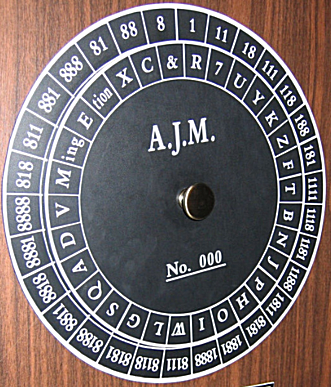
The Union Cipher Disk from the American Civil War was 3.75 inches (95 mm) in diameter and made of light yellow heavy card stock. It consisted of two concentric disks of unequal size revolving on a central pivot. The disks were divided along their outer edges into 30 equal compartments. The smaller inner disk contained letters, terminations and word pauses, while the outer disk contained groups of signal numbers. For easier recognition, the number eight represented two. The initials A.J.M. represent the Chief Signal Officer General Albert J. Myer.
A cipher disk is an enciphering and deciphering tool developed in 1470 by the Italian architect and author Leon Battista Alberti. He constructed a device, (eponymously called the Alberti cipher disk) consisting of two concentric circular plates mounted one on top of the other. The larger plate is called the "stationary" and the smaller one the "moveable" since the smaller one could move on top of the "stationary". The first incarnation of the disk had plates made of copper and featured the alphabet, in order, inscribed on the outer edge of each disk in cells split evenly along the circumference of the circle. This enabled the two alphabets to move relative to each other creating an easy to use key. Rather than using an impractical and complicated table indicating the encryption method, one could use the much simpler cipher disk. This made both encryption and decryption faster, simpler and less prone to error. Wikipedia.
If the Zodiac Killer was inspired to seek out Edgar Allan Poe by the words of Dr. D.C.B Marsh in the San Francisco Examiner on October 22nd 1969, then the A Few Words on Secret Writing had all the components required for his second and third ciphers. It had the Skytale Cipher (shown by Paul_Averly to work on the 340 cipher), followed by Poe's description of splitting the alphabet into two parts of thirteen (one beginning with A and ending with M just like the 13-Symbol cipher), and finally, the description of two concentric circles to encode a message, just like the Union Cipher Disk that contained 000 and 888.




 RSS Feed
RSS Feed

